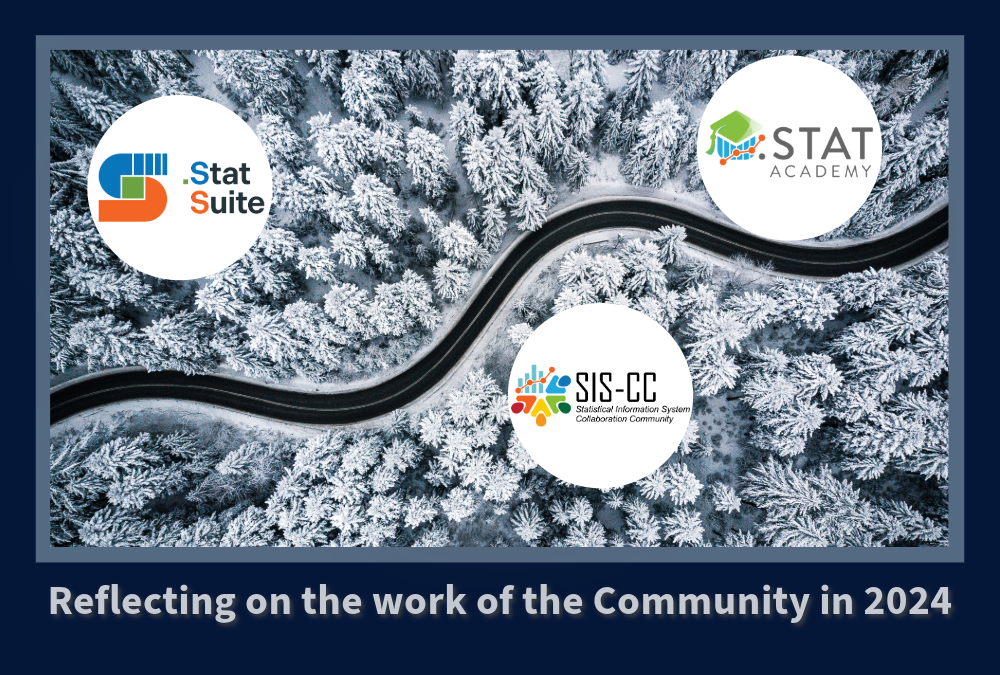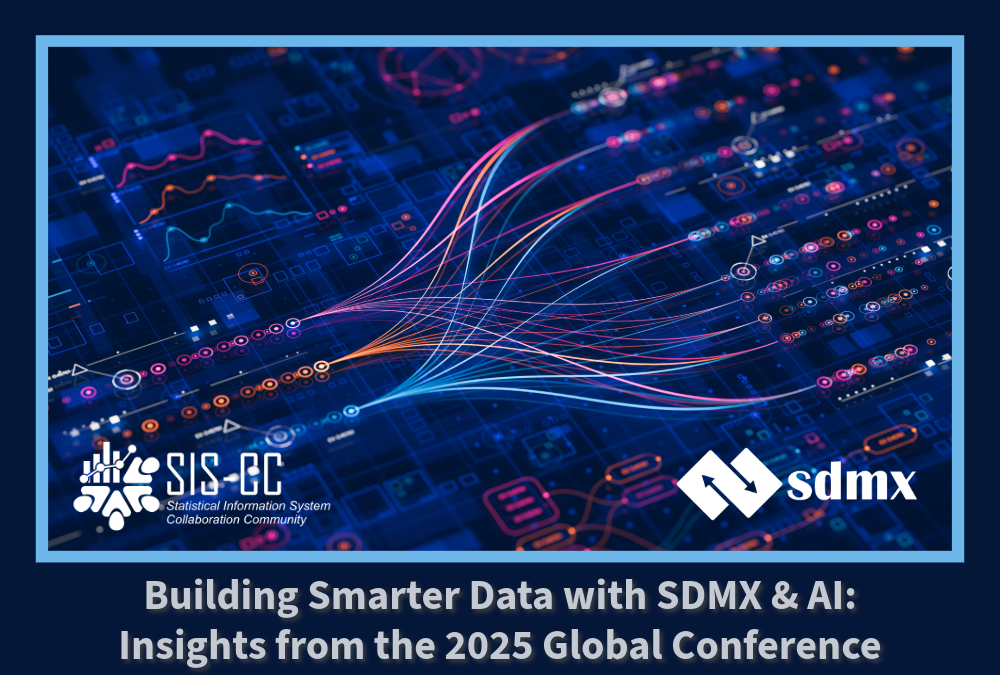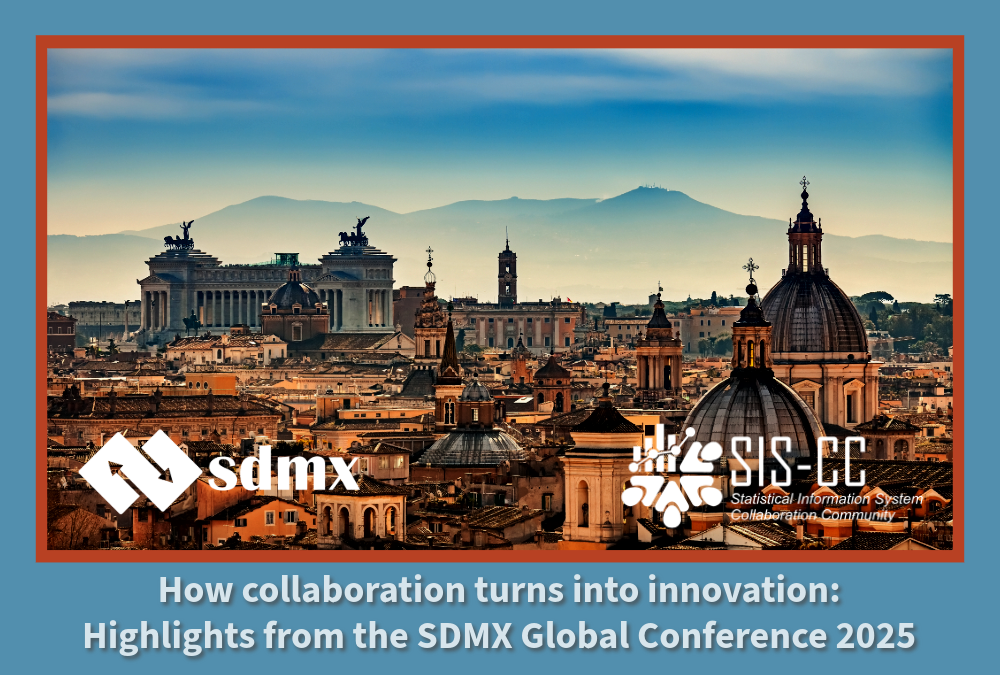
As we start 2025, we look back on a year filled with exciting developments, impactful collaborations, and a renewed commitment to advancing statistical information systems worldwide. From major events like the UN World Data Forum to the launch of new tools and initiatives, let’s look back at what the SIS-CC Community achieved together and what lies ahead.
Reflecting on 2024
2024 kicked off with the celebration of the second anniversary of the .Stat Academy, highlighting the continued addition of new courses and the growing number of certified learners – now well over 1000 at the start of 2025.
“In the long run, what we would like to achieve with the Academy, is to build a large community of learners and teachers who can put their heads together to solve the most difficult of all problems: how to enable staff to continuously learn new techniques adapted to new challenges, and how to encourage experts to share their expertise, and not only within their own organisation but for the community at large.”
Eric Anvar, Head of Smart Data, OECD
In January, we also celebrated the rollout of Uruguay’s Labour Market Information System (LMIS) through SIMEL.uy, a project led by the ILO and powered by the .Stat Suite. This implementation demonstrated how the Community open-source tools can be tailored to meet the diverse needs of statistical organisations, setting the stage for more transformative projects in the future.
In February, the focus was very much on learning, contributing to the new SDMX Learning Resources page, a comprehensive list of training opportunities for SDMX professionals, covering a wide range of topics, from data collection to dissemination, as well as publishing the next course in the .Stat Academy e-learning catalogue–Disseminating data with an optimised end-user experience.
March saw the community come together for SDMX+AI, our first workshop of the year, co-organised by the OECD and the BIS, which focused on unlocking the potential of natural language processing to enhance data access. The workshop confirmed the Community’s initial intuition: that SDMX semantics and standard format, combined with AI, should indeed allow natural language access to statistics – and much more “talking to the data”.
In May, the SIS-CC User Research Taskforce (UTF) championed the organisation of a User Research Workshop, which was the opportunity for a rich exchange of expertise, drawing in over 40 participants from different sectors. This positive outcome provided a promising foundation for the UTF’s ambition to collaborate, innovate, and share expertise.
June brought renewed attention to the increasing demand for open-source statistical software with the launch of the HLG-MOS Open-Source Software project, which aims to develop a comprehensive understanding of the benefits and challenges of adopting open source software in official statistics, exploring various use cases, and crafting tips from lessons learned.
The integration of two of the most prominent SDMX platforms, the Fusion Metadata Registry (FMR) Workbench with the .Stat Suite, also represented a significant milestone in advancing interoperability and fostering collaboration within the realm of official statistics:
“The successful integration of FMR Workbench with .Stat Suite demonstrates the power of close coordination and dialogue for delivering high-quality integrated solutions that address users’ concrete needs, efficiently and at pace. Further collaboration with both the OECD and other partners, including SDMX sponsor organisations and interested central banks, is planned under the BIS’s sdmx.io initiative which brings together open-source tools, patterns, guidance, learning resources and more into a cohesive and interoperable ecosystem centred on SDMX.”
Rafael Schmidt, Head of Med It, BIS
September was a milestone month with the HLG-MOS Sprint Meeting. In Belgrade, the Open Source Charter began to take shape, laying the groundwork for a shared framework to help National Statistical Offices transition toward open-source solutions. This effort embodies the SIS-CC’s values of collaboration and innovation and is set to become a cornerstone of our work in 2025.
“The meeting (…) was more than just a series of discussions; it was a rallying point for those passionate about advancing the field of official statistics through open-source solutions. As we move forward, it’s essential for statistical offices worldwide to embrace this shift, not only for their own benefit but for the greater good of data integrity and accessibility.”
Jonathan Challener, SIS-CC Community Manager, OECD Statistics and Data Directorate
In October, we joined SDMX experts from national statistical offices, central banks and the private sector at the 12th SDMX Experts Workshop, to discuss and promote good practices, share lessons learned and advance the standard to adapt to new technologies and evolving requirements. As part of the event, the OECD and the Bank for International Settlements (BIS) joined forces for an advanced capacity building session for data practitioners, focusing on SDMX data processing using Python, leveraging AI with SDMX endpoints and strategies for adopting advanced metadata management practices.
One of the year’s most significant moments was the UN World Data Forum in November, where SIS-CC took centre stage. Members shared insights into innovative uses of the .Stat Suite and SDMX to address global data challenges, from sustainable development to climate change. The forum underscored the Community’s critical role in shaping the future of data ecosystems, with several attendees expressing interest in joining SIS-CC initiatives.
In December, and in partnership with the OECD Istanbul Centre, we hosted a highly successful SDMX Regional Training Workshop. This inspiring event empowered participants to deepen their understanding of SDMX standards, share experiences, and explore innovative tools to enhance data operability and dissemination. Building on this success, we are excited to announce plans for additional workshops in different regions, including Asia and Latin America and the Caribbean (LAC), in 2025 and beyond.
And to close off the year we announced that Statistics Netherlands (CBS NL) had officially joined the Community, marking a significant step toward modernising its data dissemination and embracing the SDMX .
Looking ahead to 2025
As we transition into 2025, the Community is poised to unveil a new strategic before year-end, focusing on furthering our mission and adapting to emerging challenges and opportunities. This strategy will be discussed during the Mid-year Strategic Level Group meeting, setting the course for our collective efforts.
To support the development of the new strategy, in March, we anticipate hosting a series of workshops aimed at fostering knowledge exchange and capacity building among members. These sessions will provide a platform for elaborating co-investment opportunities, and our collaborative learning and innovation.
Furthermore, plans are well underway for the next SDMX Global Conference in Q3/Q4 2025, bringing together stakeholders from around the world to discuss advancements, share experiences, and chart the future of SDMX enabled statistical information systems.
In conclusion, 2024 has been a year of substantial progress and collaboration for the Community. As we look forward to 2025, we remain committed to our core values of openness, innovation, knowledge building, and community-driven development, striving to enhance statistical systems for the betterment of societies worldwide.


